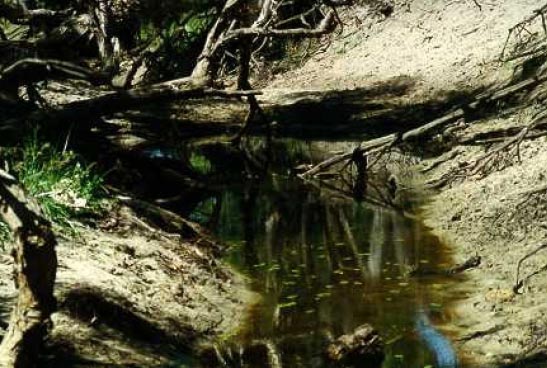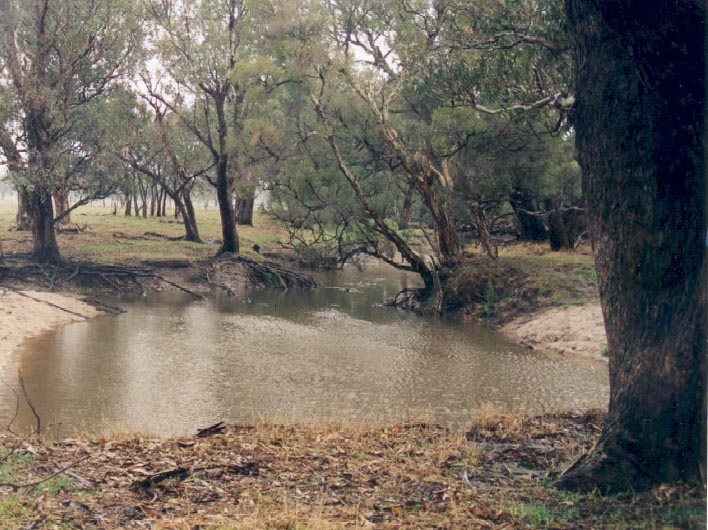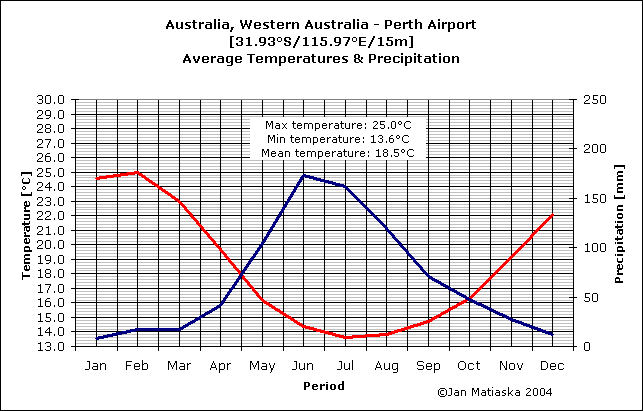The Habitat of Pseudemydura umbrina
| Pseudemydura umbrina lives in or near ephemeral winter-wet swamps with clay or sand over clay soils (Burbidge and Kuchling, 1994). It can be found in the Twin Swamps Reserve and the Ellen Brook swamps, which are located in the south west part of the Ellen Brook catchment. These wetlands are described as perched on alluvial
soils at the base of the Darling Scarp receiving water from direct
rainfall and short-distance runoff including from drains and surrounding
farmland. Inundation of these wetlands is seasonal and the swamps
dry out by mid October or November. Maximum water depth is 0.43 m
(Smith and Shams, 2002).
The Ellen Brook catchment is located about 20
km north-east of Perth City and 25 km east from the coastline of Western
Australia. The surface water catchment area of Ellen Brook, approximately
50 km long north-to-south and 20 km wide east-to-west, is 715 km2.
The Ellen Brook flows south and discharges to the Swan River. Its
waters are naturally stained and amongst the most highly coloured
on the Swan Coastal Plain. Just like the majority of the water bodies
within the Swan Coastal basin, the water in the Ellen brook is neutral
ranging from 6.5 to 8.0 pH. Very high levels of phosphorus and moderate
levels of nitrogen are consistently found in the Ellen Brook.
|
 |
 |
Ellen Brook - Western Australia |
Ellen Brook - Western Australia |
Photos: Dr Rezina
Shams, University of Western Sydney (at the time the photos
were taken, Dr Shams worked for the Water & Rivers Commission) |
|
|
Average annual rainfall is about 800 mm (see Diagram
#1). Most of the precipitation occurs from May to September. The period
from November to April is hot and dry. As a result, the Ellen Brook
flows during the months of May to November. Summer flows are unusual
and only occur after significant summer rainfall. Isolated pools of
water persist along the channel at several locations in the Bullsbrook
area in the south of catchment (Smith and Shams, 2002). When the swamps
are nearly dry and water temperatures rise above 28°C, usually in
November, the tortoises leave the water to aestivate during the summer
and autumn. Aestivation refuges vary with the soil type: at Ellen Brook
Nature Reserve they are naturally-occurring holes in the gilgai clay,
while at Twin Swamps Nature Reserve most aestivated under Banksia
leaf litter or fallen branches, but a few find holes in the ground dug
by other animals or left by a rotting tree root (Burbidge and Kuchling,
1994).
Diagram #1

|
| ©Jan Matiaska & Scott
Thomson 2003-2004
|



